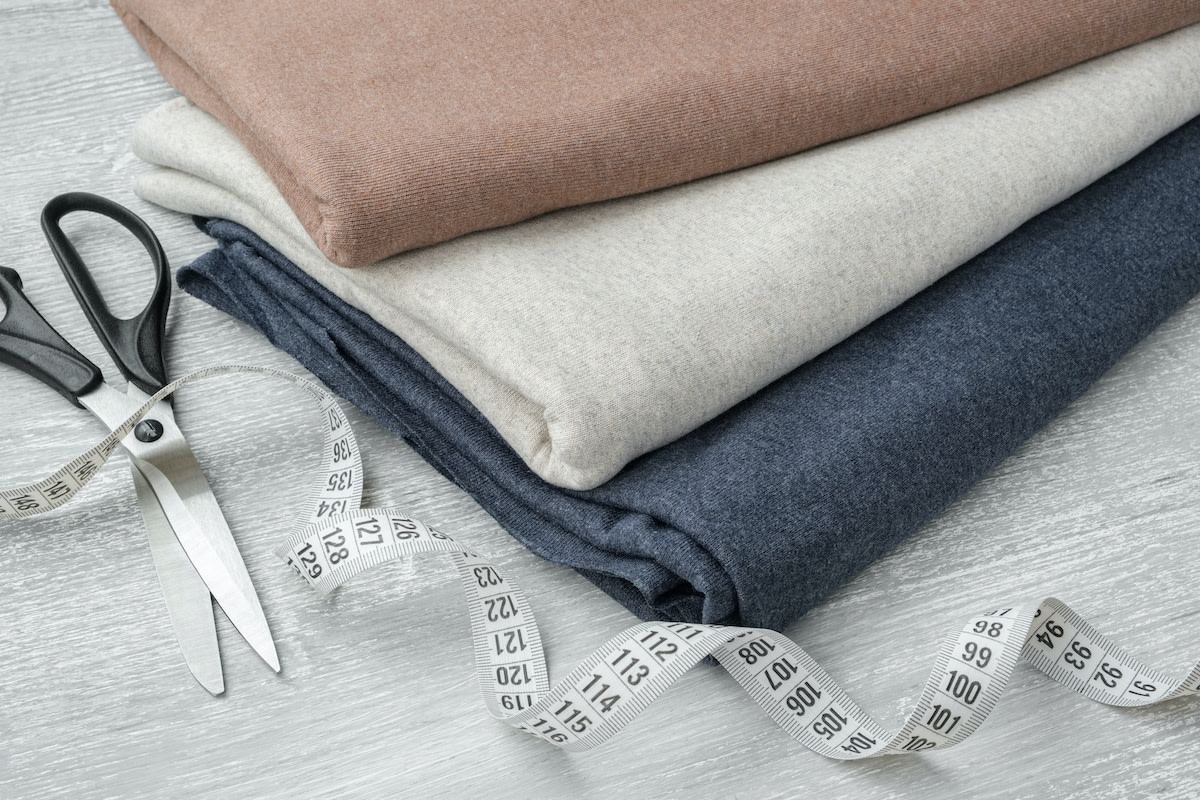How to Cut Fabric on the Bias: 4 Tips for Making a Bias Cut
Written by MasterClass
Last updated: Jun 7, 2021 • 4 min read
A bias cut can transform the right material into a sleek garment. Knowing the right information about measuring and cutting can eliminate some of the challenges that can come with the cut and result in an item you’ll want to wear for every occasion.
Learn From the Best
What Is a Bias Cut?
A bias cut is a technique used by clothing makers to cut fabric at a diagonal angle across the weave of the fabric (called the grain) to give the material more softness and elasticity. All woven fabric is constructed by weaving warp and weft threads. The warp threads run horizontally to the bound edge of the fabric (the selvage), while the weft threads run vertically or perpendicular to the selvage. A true bias grain runs diagonally at a 45-degree angle across the weave, and fabric cut along the bias eliminates some of the tension from the weave, giving the fabric more fluidity and stretch.
When Did Bias Cuts Become Popular?
Though clothes have been cut across the bias grain since the Middle Ages, the bias cut came to prominence in the 1920s, when French fashion designer and couturier Madeleine Vionnet used them for haute couture. Their slimming and flattering qualities would change the course of women's fashion, and bias-cut garments continue to be featured in collections of many fashion designers today.
In contemporary fashion, the bias cut is often used for dresses, skirts, or nightgowns, which benefit from the draping and contouring qualities this cut gives to the fabric. The cut can also be used for simpler garments, like a T-shirt.
4 Tips for Making the Bias Cut
Here are some tips for making a bias cut that will ease some of the challenges that come with this particular technique:
- 1. Choose a simple fabric and pattern. Making a bias cut can be difficult, especially for first-timers, so choose a fabric and pattern that won't present a problem. Cotton, linen, silk, and wool challis are all great picks for your first bias-cut tops. Avoid rayon, which is stretchy, and silks or crepe de chine; they look great but can be challenging to work with. Patterns can be complicated first choices, so it's best to choose a solid fabric or pattern that's easy to navigate.
- 2. Mind your seam allowance. Bias cut needs more fabric and seam allowance. Calculate your yardage carefully; for a knee-length dress, you should consider an extra meter of yardage. For seam allowance, a minimum of one inch per seam will accommodate the narrowing that occurs when the garment is worn.
- 3. Use a suitable surface. A dressmakers' cutting board is ideal for bias cuts, but if you don't have one, a large, flat cutting surface covered with tissue will keep this delicate fabric from stretching. Tape the tissue to the surface and then position the fabric before pinning. Ensure that none of the fabric hangs over the edge of the cutting surface.
- 4. Handle with care. While making the bias cut, avoid stretching the material by holding the fabric. Accidental stretching can also happen once you begin sewing by hand, optimal for the best results. A sewing machine can pull fabric and seams and leave you with a stretched-out neckline or other similar unwanted errors. Many online tutorials can help you navigate sewing by hand.
How to Make a Bias Cut
There are several essential steps to follow and considerations to take when making a bias cut, including:
- Find the grain. To find the correct 45-degree angle for a bias cut, fold the selvage at a right angle so that the straight grain is parallel to the crosswise grain. Different angles or biases will give you less stretch. Measuring at two different points on the grainline with a 45-degree ruler will assure you're working on the true bias.
- Take your time. If your bias is off, your garment will not fit well. Pattern weights and pins can give you greater control and accuracy; be sure to pin through the tissue, the pattern, and the fabric for the most support.
- Be mindful of both sides. Every piece of fabric has two true biases, but it's important to remember that they run perpendicular to each other and not parallel (if you're using a sewing pattern, you'll see it on the pieces when you lay them on the fabric). Cutting the front and back of a dress on the parallel will result in a dress that won't stay put on your body. Cut them on the perpendicular to ensure both sides are evenly balanced.
- Stay single. Bias cuts benefit from being cut flat and in a single layer. By cutting on the fold, you run the risk of stretching the material and ending up with uneven side seams or armholes. A sewing pattern will help you make precise cuts. If you've used a rotary cutter, it's a useful tool for pattern cutting, but fabric shears will also work. If you're not comfortable with fabric shears, place a layer of tissue beneath the fabric to stabilize your cut. Learn more about following sewing patterns in our complete guide.
Want to Learn More About Fashion Design?
Become a better fashion designer with the MasterClass Annual Membership. Gain access to exclusive video lessons taught by the world’s best, including Marc Jacobs, Laura Kim & Fernando Garcia, Tan France, Diane von Furstenberg, Anna Wintour, and more.
